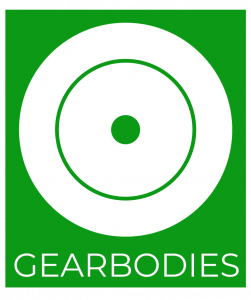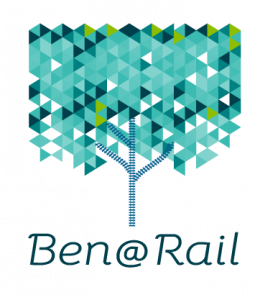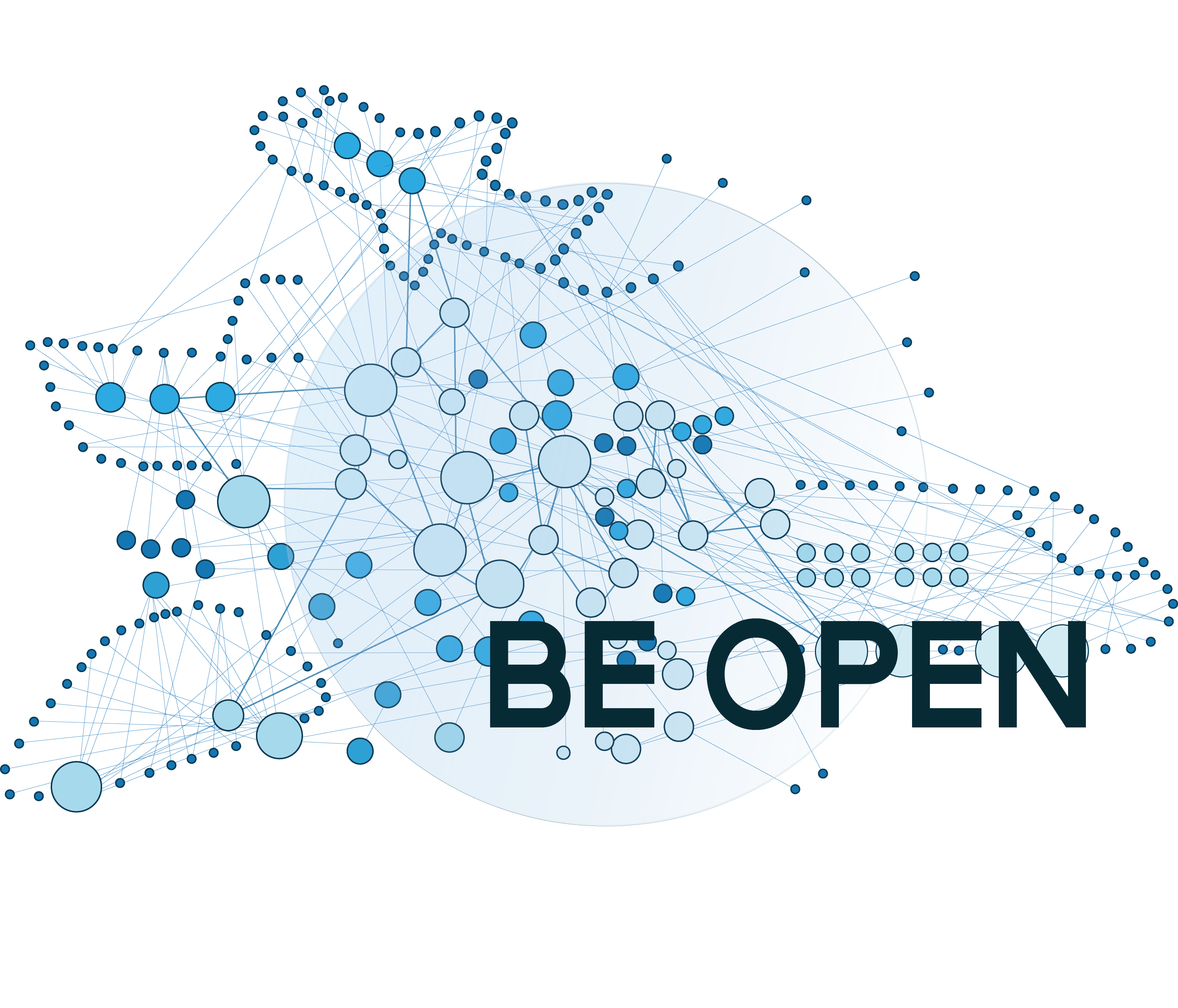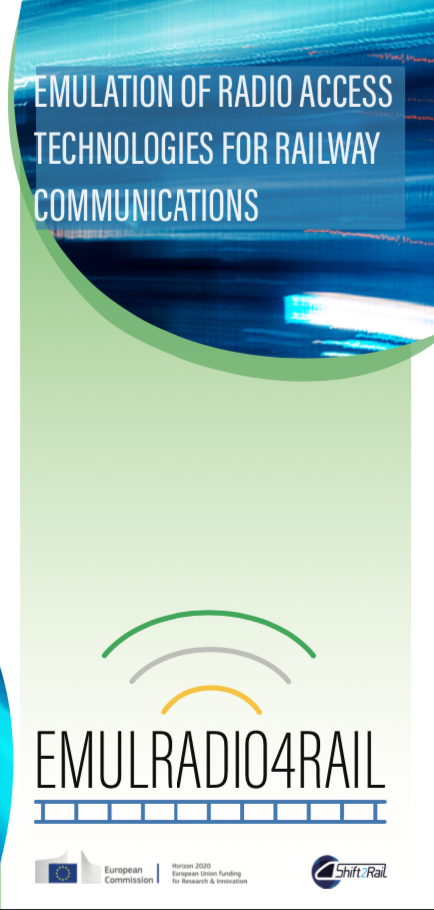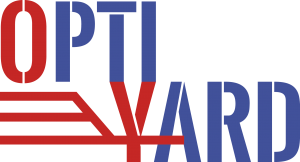Earlier projects
EURNEX participates in selected projects and coordination actions, having the aim to reinforce the participation of academia and science throughout its network of excellent experts.
Navigate on the tabs to know more about our earlier project activities.
GEARBODIES is a 25 month project (01/12/2020 – 31/01/2022) financed by the Shift2Rail Joint Undertaking (JU) under grant agreement No 101013296 with 13 partners from 8 countries.
The success of the European rail system to foster the modal shift towards rail requires cost-efficient and reliable long-lasting trains. GEARBODIES contributes to this effort by improving the efficiency of rolling stock maintenance in close collaboration with the ongoing CFM-IP1-01-2019 (PIVOT2). To achieve the above, GEARBODIES follows a twofold approach: extending overhaul periods and improving maintenance processes. The extension of overhaul periods will be facilitated by developing high-performance and long-lifetime components for running gear. The improvement of maintenance processes will be boosted by developing innovative NDT technologies to optimise inspection processes for lightweight carbody shells. GEARBODIES will design and prototype several elastomer-metal running gear components, suitable for serial production, based on high-performance new elastomer formulations and existing elastomers not yet applied in rolling stock elements. In addition, the project will also explore innovative technologies for the development of low LCC bearings. New lubrication solutions, new materials for races and rollers, novel polymers for cages and the effects of new bearing geometries will be researched, among which the most feasible ones will be integrated in a new bearing design and prototyped. GEARBODIES will develop an innovative modular platform to reduce the inspection time of lightweight carbody shells. The platform will incorporate tailored thermography and ultrasonic inspection systems and will facilitate the automated detection and assessment of defects throughout the thickness of the shell by using a customed software module. GEARBODIES will benefit form a strong multidisciplinary consortium, made of 13 partners from 8 countries, committed to the mentioned actions towards maximisation of the project’s impact.
Advanced approacheS and practices for rail training and education TO inNovate Rail study programmes & Improve rail higher education provision.
01/09/2020- 31/08/2023. An ERASMUS+ financed project with 8 partners from 7 countries.
Aston University, Birmingham. EURNEXe.V Berlin, KTH Stockholm, University of Zagreb,University of Malaga, Technical university of applied science Wildau, University of Žilina, Sapienza University of Rom.
Supported by RailUniNet, Trafikverket, TruckTrainDevelopments, UIC, Democritus Thrace University, Institute of Metro & Rail Technology, JP Research & Consulting, VESSAM group, The Cluster Transport|Mobility|Logistics Berlin Brandenburg (Germany) and netwiss OG, Austria
The railway industry is transnational and one of the fastest growing industries in the world, necessitating a skilled workforce able to:
- master new technologies,
- ensure and facilitate the effective implementation of innovation and
- handle railway system complexity with ease in the era of digitatlisation.
To build and retain such a workforce that responds adequately to:
- new technological developments,
- innovation,
- wider economic changes and the intricacies of local markets.
In addition there is a need for creation, promotion and application of knowledge to be secured through multi-national / cultural / sectoral joint ventures to establish a contact, promote innovation, facilitate implementation and ensure the fullest open exchange of good / best practice at all management levels: operational, tactical and strategic.
Ben@Rail:
- Duration: 9 months, 1st September 2021 – 31st May 2022
- Consortium: EURNEX (Coordinator), RWTH Aachen University, KTH royal institute of technology
- Supported by Shift2Rail Joint Undertaking
- Advisory group will include ERRAC Steering Committee and the German Centre for Rail Transport Research.
- Budget: 169 985.00 EUR
For the future Europe’s Rail Joint Undertaking to be successful, the innovations stemming from its Master Plan must adhere to the needs of railway stakeholders and final users. Ben@Rail contributes to the success of the new Undertaking by applying a scientifically proven methodology to quantify the efficacy of EU-funded R&I activities. To reach this objective, Ben@Rail will provide evidence-based research to assess the extent to which the foreseen innovations of Shift2Rail and its successor respond to clear societal cases and stakeholders’ and users’ expectations. To achieve this, Ben@Rail, in close cooperation with the European Rail Research Advisory Council (ERRAC), will develop a top-down analysis grounded on two elements. On the one side, the requirements of the rail sector stakeholders vis a vis EU-funded research are identified. On the other side, the sector’s strategic documents are reviewed and analysed in light of the stakeholders’ expected benefits and the wider societal challenges to extract objectives, key technical concepts and development areas that will affect and shape the Railway System of the future. The resulting analysis will assess the adherence of EU-funded R&I activities to the stakeholders’ requirements, thus evaluating the expected outcomes of the future new Joint Undertaking Master Plan. Ben@Rail will develop a scientific, innovative framework for the evaluation of EU-funded projects based on the stakeholders’ requirements. One of the strengths of this framework relies on its possible application in other sectors to comprehensively investigate future funding R&I programmes. Ben@Rail will benefit from a consortium composed of three renowned scientific centres in the field of rail research, committed to the mentioned actions and towards the maximisation of the project’s impacts by communicating and promoting its outcomes to the scientific community, rail stakeholders and policymakers.
01/12/2019 – 31/05/2022, 17 partners from 10 countries.
grant agreement No 881825. Shift2Rail.
Travel Companion enhancements and RIDE-sharing services syncronised to RAIL and Public Transport.
The RIDE2RAIL project aims to develop solutions and tools that will facilitate the efficient combination of ride-sharing and scheduled transport services such as bus and rail.
By making it easier to compare and choose between multiple transport options and services, RIDE2RAIL seeks to make ride-sharing a (more) attractive way to move passengers towards public transport services and at the same time fight congestion and pollution.
The project will integrate multiple (public/private/social) data sets and existing transport platforms to make ride-sharing a complementary transport mode that extends public transport and rail networks.
01.12.2018 – 31.05.2020, 31 partners from 13 countries.
H2020 815001. grant agreement No 815001.
Drive2theFuture aims to prepare “drivers”, travelers and vehicle operators of the future to accept and use connected, cooperative and automated transport modes and the industry of these technologies to understand and meet their needs and wants. To achieve this, it models the behaviour of different automated vehicle “drivers” & prognoses acceptance for several automated driving scenarios, develops specialized training tools (3D automated scenarios for VR-goggles, web applications and social media platforms), content, optimized HMI for “driver”-vehicle handovers, CEA and MCA studies for selection of most favorable automated functions realisation and then demonstrates them in 12 Pilots across Europe,and in 3 major events.
Pilots cover all automated transportation modes (Automated car, PTW, truck, bus, minibus, rail, workboat and drones) and involve driving/riding/rail simulators, VR/AR simulation toolkits, test tracks and real world environments, in which over 1000 AV drivers/passengers, 200 AV operators and 20000 involved citizens experience automation from few hours to 6 months. KPI’s, such as user acceptance, user awareness/appreciation of actual automated function performance (gap between expectations and reality), automated operation efficiency and cost effectiveness, are defined and will be followed through subjective and objective (conflicts analysis) tools.
The automated vehicles “driver”/rider/operator behaviour will be modelled and due emphasis is given to cross fertilisation issues among different modes. The project will also research relevant legal, ethical and operational issues (with strong user involvement through FIA and 4 of its Clubs, UITP and IRU), the interaction between automated vehicles and relevant MaaS and will issue guidelines, policy recommendations and a user acceptance path Roadmap to Automation. This challenging task is undertaken by 31 Partners from 13 European countries; through 10 interrelated workpackages, over 36 months.
- Duration: May 2019 – May 2022
- Budget: €3.9 million
- Coordinator: CERTH
- Partners: STATENS VAG- OCH TRANSPORTFORSKNINGSINSTITUT (VTI), TRANSPORTOKONOMISK INSTITUTT (TOI), NATIONAL TECHNICAL UNIVERSITY OF ATHENS – NTUA (NTUA), UNIVERSITA DEGLI STUDI DI ROMA LA SAPIENZA (CTL), VRIJE UNIVERSITEIT BRUSSEL (VUB), UNIVERSIDAD DE LA IGLESIA DE DEUSTO ENTIDAD RELIGIOSA (UDEUSTO), INSTITUT FRANCAIS DES SCIENCES ET TECHNOLOGIES DES TRANSPORTS, DE L’AMENAGEMENT ET DES RESEAUX (IFSTTAR), SWARCO MIZAR SRL (SWM), EURNEX, DEEP BLUE, Fraunhofer, TECHNISCHE UNIVERSITAET MUENCHEN (TUM), FZI FORSCHUNGSZENTRUM INFORMATIK (FZI), IRU PROJECTS ASBL (IRU), HUMANIST, FOUNDATION WEGEMT, AIT AUSTRIAN INSTITUTE OF TECHNOLOGY, UITP, FONDATION PARTENARIAL MOV’EOTEC VED, PIAGGIO, FEDERATION INTERNATIONALE DE L’AUTOMOBILE (FIA), IAM RoadSmart), POLSKI ZWIAZEK MOTOROWY, Wiener Linien), TECHNISCHE UNIVERSITAT BERLIN (TUB), TUCO, INFILI TECH), STELAR, AUTOMOBIL CLUB ASSISTENCIA SA (ACASA), VIAS
 01.12.2018 – 31.05.2021, 19 partners from 10 countries.
01.12.2018 – 31.05.2021, 19 partners from 10 countries.
grant agreement no. 826250 Shift2Rail
Assets4Rail is a 37 months Shift2Rail project which will contribute to the modal shift to rail by exploring, adapting and testing cutting-edge technologies for railway asset monitoring and maintenance.
The project started in december 2018 and can be followed via the website:www.assets4rail.eu
Assets4Rail shares the Shift2Rail view of having an ageing European railway infrastructure that needs to cope with the expected increased traffic in the future. To achieve this, we need an improvement in technology and a cost-effective maintenance and intervention system for infrastructure inspection and monitoring.
Therefor the main objective for the project is to develop a set of cost efficient, innovative and asset specific measuring and monitoring devices. These will not only collect and deliver the status data of the railway system (tunnel/ bridges/ track geometry/ safety systems/ rolling stock) but it will also process and analyse the information in Building Information Models with integrated algorithms to generate relevant maintenance infrastructure-related information to support asset management decisions.
01.01.2019 – 30.06.2021, 17 partners from 10 countries.
H2020-MG-2018, Grant Agreement number: 824323
Open Science is a modern movement that represents a new approach to practicing science, in a way that increases openness, integrity and reproducibility of research. It aims at making scientific process and results more transparent and accessible at all levels and to everyone. The rapid growth of digital technologies and new collaborative tools become enablers of Open Science, allowing to speed up the process of adopting open habits and facilitating the sharing of large volumes of information, study materials and data. Europe has a culture and ability to share research activities across national boundaries, which along with its remarkable research and knowledge base put it in a leading position in the world to promote and expedite the new Open Science way of working. In fact, nearly 10% of the budget allocated for the Horizon 2020 Work Programme 2018-2020 is channelled to direct or indirect support of Open Science and towards this direction, the European Open Science Cloud (EOSC) has been developed to enable sharing and re-use of research data across disciplines and borders, taking into account relevant legal, security and privacy issues.
In the context of transport, “fostering more Open Science through intensified user engagement and societaluptake, and more Open Innovation allowing for dynamic knowledge circulation enabling socio-economic addedvalue” are laid down as the objectives of the European Commission Transport Research and Innovation policy. Hence, research, technology and innovation actions in the transport sector face new challenges linked to the aspects of Open Science. Technical interoperability, data and information interoperability, deployment of new skills, development of new schemes for research evaluation and adoption of collaborative ways of working are some of the main challenges of building Open Science platforms in transport research, with information always open to major groups of transport stakeholders from research, public and private organisations and the general public.
As the way in which science and research are carried out has changed, BE OPEN aims to assist in operationalising Open Science in transport research at the European level, through a series of targeted coordination and support activities. BE OPEN brings together a strong partnership comprising leading transport research institutions and research networks at pan-European level covering all transport modes (i.e. road, rail, water, air), and partners with high-level expertise in Open Science practice who are at the forefront of relevant developments in Europe, complemented by an advisory board of world-leading experts engaged in international initiatives.
BE OPEN aims to promote Open Science in transport research (Figure 1) and assist in regulating and standardizing it.
01.12.2018 – 31.05.2020, 7 partners from 5 countries.
H2020-S2RJU-2018 grant agreement No 826152, Shift2Rail.
To avoid the complex and expensive installation and operation of various real radio access equipment in the development labs, the project EMULRADIO4RAIL (EMULation of RADIO access technologies for RAILway) will provide an original testing and evaluation platform based on radio access and network behaviour emulation at IP level which can act as flexible, configurable and programmable laboratory tool to support both the end-to-end validation and verification activities.
EMULRADIO4RAIL will provide an innovative platform for tests and validation of various radio access technologies (Wi-Fi, GSM-R, LTE, LTE-A, 5G and satellites) that combines very new approaches for testing so called System in the loop (SITL) and Hardware in the loop (HITL). The adaptable communication prototypes will be coupled to both simulations of the communication core network and emulation of various radio access technologies thanks to the coupling between discrete event simulator such as RIVERBED modeler (former OPNET modeler), Open Air Interface, various radio channel emulators, Network emulator, models of IP parameters and real physical systems. The radio access emulation tool will offer a graphical based interface for the users.
EMULRADIO4RAIL platform will work at IP level i.e. the radio access emulator will reproduce the radio access behaviour as seen by the applications.
EMULRADIO4RAIL will investigate the various communication and environment scenarios in railways covering degraded modes, outages, network overload scenarios, interferences and other perturbations which occur in the railway environment or can be expected in the future. Particular focus will be proposed on interferences, taking into account also intentional ones.
EMULRADIO4RAIL will analyse and select the communications characteristics perceivable by the applications and services using the communication bearer (like throughput, packet loss, jitter, etc.).
EMULRADIO4RAIL will assess the communication capabilities of existing radio access networks and how they could be emulated.
EMULRADIO4RAIL will provide support to Shift2Rail members for integration of the radio access emulation platform in the verification labs.
The Emulradio4rail project is carried out by 7 partners from 5 different EU member countries.
H2020-MG-2016-2017
The SKILLFUL vision is to identify the skills and competences needed by the transport workforce of the future (2020, 2030 and 2050 respectively) and define the training methods and tools to meet them.
The SKILLFUL project’s aims are threefold:
- To critically review the existing, emerging and future knowledge and skills requirements of workers at all levels in the transportation sector, with emphasis on competences required by important game changers and paradigm shifters (such as electrification and greening of transport, automation, MaaS, etc.);
- To structure the key specifications and components of the curricula and training courses that will be needed to meet these competence requirements optimally, with emphasis on multidisciplinary education and training programmes;
- To identify and propose new business roles in the education and training chain, in particular those of “knowledge aggregator”, “training certifier” and “training promoter”, in order to achieve European wide competence development and take-up in a sustainable way
H2020-S2RJU-2017
The Commissions 2011 White Paper states that by 2050, rail should substantially expand its modal share over medium and long distances. This is consistent with the Policy goals of expanding rail capacity, both cited in the Horizon 2020 and
Shift2Rail (S2R) calls. Considering the ambitious Horizon 2020 Key Performance Indicator (KPI) calling for a surge in the utilisation of capacity within a range 70-90%, yards, hubs and terminals play a key role in facilitating this step-change by
contributing to a competitive, reliable and safe freight transport. To meet the needs of S2R and Horizon 2020, OptiYard will design decision support tool for yard managers that will help them to optimise processes and manage their yards more efficiently. It will do this in real-time, with interaction with relevant network. The processes must be performed in real-time, to guarantee on-time delivery and operational efficiency, in particular, for single wagon transport.
OptiYard addresses critical operational points of the transport chain (both rail marshalling yards or as transfer points to other modes) to improve capacity and reliability. OptiYard will facilitate real-time interaction between yard and relevant network IT systems that allow for software based planning and ultimately optimisation of single wagonload and blocktrain operational processes.
Building on the current state of the art and practice, the ambition of OptiYard is to provide a fully functional software module where real-time yard management, interaction with the network and ad-hoc timetable planning will be simulated in real-time. The optimization module and algorithms will be proven for large and complex freight transport networks, and integrate well with IP5 activities towards automation, e.g. intelligent assets and automated shunting and mainline operations.
EC FP7 Project (2015-2017)
An efficient and high-quality transport infrastructure is a fundamental requirement for the connectivity of people and goods in Europe and basis for economic growth, competitiveness and territorial cohesion. In general, the transport network in Europe is of a high standard but is still fragmented regarding the geographical distribution and the transport modes.In recent years, first networking activities and exchange of strategic programmes among the stakeholders of the four transport modes – road, rail, water and air – can be noticed but still a mono-modal, monodisciplinary culture exists. In the light of the future challenges, e.g. increasing transport demand, ageing infrastructure, scarcity of natural resources, changing climatic conditions, it is inevitable to strengthen the collaboration of the single transport modes in order to create an improved future integrated and functioning transport system for Europe, despite of limited financial resources of the owners of the transport network.The FOX project aims to develop a highly efficient and effective cross-modal R&D environment and culture which meets the demanding requirements of the transport and connectivity. Based on already existing programmes and agendas related to the aspects of comodal transport research, the FOX project will identify common needs and innovative techniques in the areas ofconstruction, maintenance, inspection, and recycling & reuse of transport infrastructure. This will be reached by the involvement of all stakeholders (owners, researchers, and industry) of the four transport modes in a phased approach:
Starting with the determination of the state-of-the-art in research and practice, in the next step the most promising practices and ideas will be identified. By mapping the common needs, the final aim is to establish a cross-modal Working Group to develop a roadmap for the whole transport sector and set the agenda for further improvement of cross-modal research development innovation.
EC FP7 Project (2015-2017)
The transport network across Europe faces challenges relating to carbon reduction targets, energy security, and depletion of natural resources, without sacrificing its efficiency and compromising mobility. In addition, the road and rail infrastructure in particular are ageing and require renewal. Simultaneously, advances in sensors, mobile communications, smart ticketing and ‘big data’ offer the potential for customers to become an active part of the transport operations system and have the information to make decisions – for transport to enable ‘mode agnostic’ personal and business travel and – for freight operators to have more resilience and better reliability in their systems.
The European transport system faces also an unavoidable societal challenge, which is achieving new levels of resource-efficiency, environmental-friendliness, safe and seamless transport for the benefit of citizens, the economy and society.
In order to tackle the challenges and reap the benefits outlined above, infrastructure owners and transport operators will be required to work together, along with other crucial stakeholders, to share knowledge and cooperate in a way that will be beneficial to all parties, and this proposal seeks to facilitate this.
The objective of this project is to better understand the common challenges experienced across transport modes, bring representatives of transport modes together to share experience and skills and to develop a set of common research objectives.
The project will draw upon the experience gained from the Joint European Transport platform with the focus on infrastructure operations, and will also focus on research objectives presented in the Forever Open Road programme and the work of the FORx4 – Forever Open Road, Railway, Runway and River – A Cross-modal transport initiative for research for which FEHRL produced a ‘Point of View’ document.
EC FP7 Project (2014-2016)
Easy, efficient, safe and secure transportation is a core factor for European growth, collaboration and employment and therefore an item in the Europe 2020 strategy. Land transportation has two main challenges concerning security: avoiding interrupts of transport itself to assure the flow of freight and passengers to guarantee supply of the population and avoiding that transportation modes themselves become a mean for attacks. The future research agenda for security in land transport which CARONTE will provide, focuses on core relevant gaps caused by emerging risks and will avoid doubling in research.
For this CARONTE will provide answers to the question of what type of security related projects should be planned in the future, considering the current state of the art and existing research projects. It will cover all threats (including cyber-crime) and security aspects for all land transportation modes, respecting fundamental human rights and privacy. The step by step method includes analyzing the state of the art and emerging risks, identification of gaps, analyses and assessments of potential solutions and the research agenda.
The CARONTE consortium consists of universities and research institutes, providing well experiences (research and consultancy) in transportation, logistics, infrastructure management and security. The partners are aware of practical needs and frames in land transport, and security as well as ethic, social and privacy aspects. As the partners come from neutral organizations, remaining neutrality concerning the project findings is guaranteed.
Results which may mainly cover private interests are prohibited. This leads to a balanced and efficient research agenda. To ensure practical use and acceptance of the final recommendations, end-users (transportation companies, infrastructure managers, terminal operators, customs etc.) and the suppliers of security and transportation equipment will be integrated through a High Level Advisory Board.
As a Network of Excellence, EURNEX is a suitable project partner for introducing the contribution of selected stakeholders, target users platforms and high level experts in the projects discussions and workshops. EURNEX participates in selected projects and coordination actions, having the aim to reinforce the participation of academia and science throughout its network of excellent experts.
Navigate on the tabs to know more about our earlier project activities.
Earlier Projects:
EC FP7 Project (2013-2016)
FOSTER RAIL addresses the broad support challenges of SST.2013.6-1. Strengthening the research and innovation strategies of the transport industries in Europe. This Research action is a Level 1 Coordination and Support Action aiming at supporting the land transport European Technology Platforms activities.
This action will assist ERRAC and the other transport-related European technology platforms (ETP) in defining research needs for their strategies and programmes in order to realise the objectives of the Europe-2020 strategy and further on the vision of the White Paper 2011 for a competitive and resource-efficient future transport system. This will be done in consultation with the European Commission (EC) and Member States and Associated States (MS/AS).
The FOSTER RAIL workplan has been structured into 8 Work Packages (WP) which correspond to a series of logical steps with a certain degree of inter-relation that will ensure the successful outcome of the project.
Especially, FOSTER RAIL will integrate the work done so far by ERRAC and its Working Groups and will further develop this.
FOSTER RAIL shall build on ERRAC-ROADMAP and continue to support and enhance cooperation between stakeholders, including decision-makers, and enhanced definition of strategic research and innovation needs. As regard research and innovation targeting co-modality and other multi-modal issues, FOSTER RAIL shall address them in supportive cooperation with other transport modes.
Finally, this project will be an essential support tool to provide a relevant Strategic Rail Research and Innovation Agenda as well as a Rail Business Scenario for 2050. This Railway Business Scenario shall be the reference for future research agendas and technology roadmaps to be developed in the timeframe from now on until 2050.
Long distance trade between the major centers of Europe and Asia has played a major role since the antiquity. Nowadays, the trade between the two continents has increased substantially, due to the development of Asian countries, particularly China (the so called “China effect), on one hand, as well as due to the emergence of countries such as Russia on the other. Rapid changes in Global Value Chains and the emergence of Global Production Networks have manifested the growth of trade and interconnected economic relationships between these areas.
Up till now maritime transport has taken over the major share of these trade volumes, accounting to a fast growth in maritime traffic at rates of over 6% per year. High demand for maritime transport and the resulting economies of scale have helped in rationalizing freight. This monopoly however of maritime transport, causes some serious problems. One of the most important problems is the maritime traffic congestion that is observed between the major maritime hubs creating also severe environmental issues due to the potential for accidents.
Based on the above, the shift, of at least part of the trade volume, to the land EU-Asian corridors is now more than ever before essential, revealing new and significant opportunities for all modes of transport and particularly for the railways. More specifically, when it comes to long distance land routes going through Asia and Europe, the railways, as well as the inland waterways find themselves in a very advantageous position due to the fact that they meet transit needs and accessibility requirements for the countries along the way in a more efficient manner, despite any missing links that need to be developed. The most important of these land routes are:
The Trans-Siberian route that connects the Russian Pacific Ports of Vladivostok Nakhodka with Moscow;
The so-called TRACECA Corridor (TRAnsport Corridor Europe-Caucasus-Asia) which offers a number of itineraries along the once called Silk Road and
The trans-Asian railway route through Turkey and Iran.
In line with the above the aim of the proposed NEAR2 project will be to engage all the interested parties, countries and stakeholders but most importantly the rail research community in a cooperation aiming to promote railway transport, creating this way a notable alternative to maritime or even air transport.

